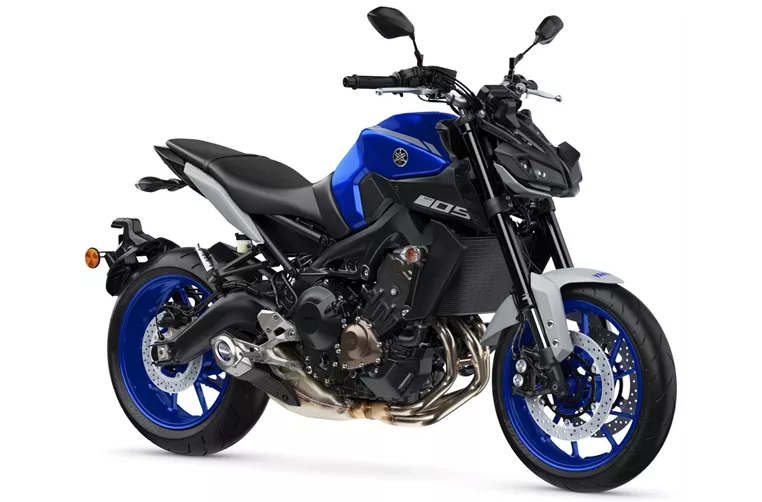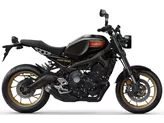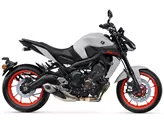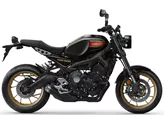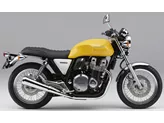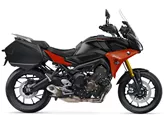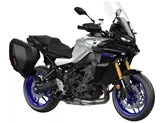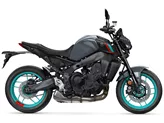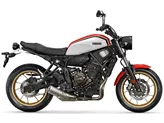Yamaha XSR900 2016 vs. Yamaha MT-09 2020

Yamaha XSR900 2016
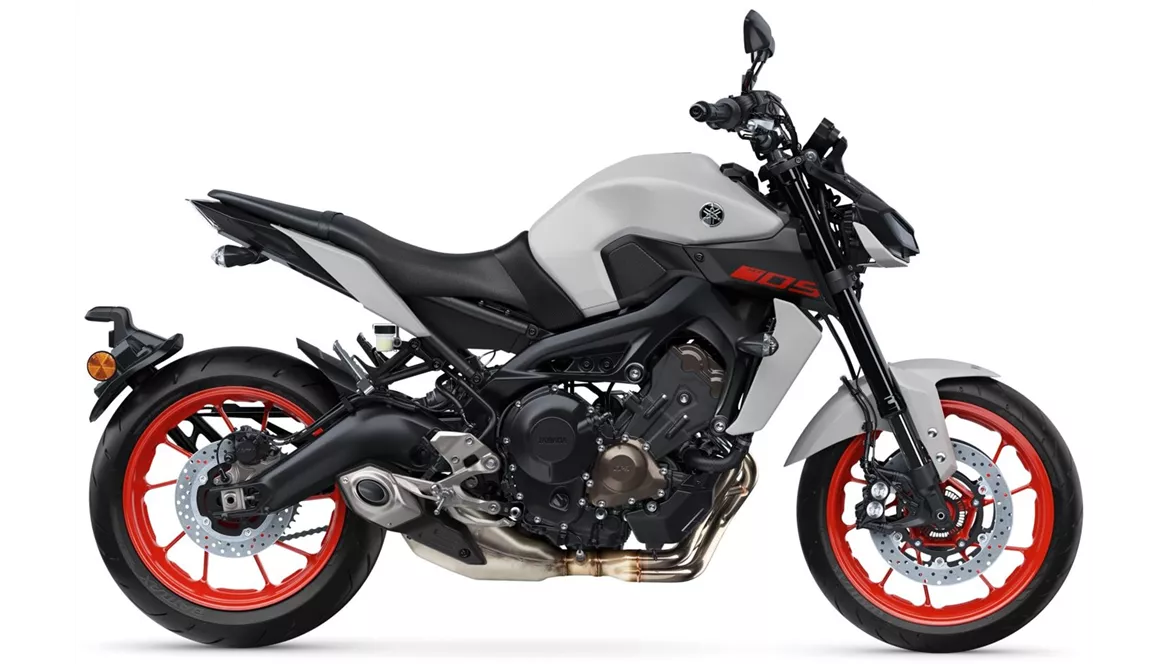
Yamaha MT-09 2020
Overview - Yamaha XSR900 2016 vs Yamaha MT-09 2020
The Yamaha XSR900 2016 and the Yamaha MT-09 2020 are both naked bikes with similar technical specifications. They both have an inline engine with a power output of 115 HP and a torque of 87.5 Nm. The engine is liquid-cooled and has a displacement of 847 ccm. They both feature an upside-down telescopic fork front suspension and a swing arm rear suspension with a monoshock absorber. The chassis of both bikes is made of aluminum and has a twin tube frame. They also have double disk front brakes with a diameter of 298 mm and ABS as standard.
In terms of dimensions and weights, both bikes have a front tire width of 120 mm and a front tire diameter of 17 inches. The rear tire width is also the same at 180 mm, and the rear tire diameter is 17 inches as well. They have a wheelbase of 1440 mm and a seat height of 815 mm. The kerb weight of the Yamaha XSR900 2016 with ABS is 191 kg, while the Yamaha MT-09 2020 weighs slightly more at 193 kg. Both bikes have a fuel tank capacity of 14 liters.

Yamaha XSR900 2016
The Yamaha XSR900 2016 has several strengths. It has a powerful engine that provides a thrilling riding experience. The riding modes are well-tuned, allowing for different riding styles and preferences. The bike also comes with ABS and TC as standard, providing added safety and stability. In terms of design, the XSR900 has an authentic modern look and clean workmanship.
However, the XSR900 also has some weaknesses. The chassis is on the harder side, which may not be as comfortable for longer rides. The seat could also be more comfortable, especially for extended periods of riding. Additionally, the speedblock design is not unique to the XSR900 and can be found on many other Yamaha models.
On the other hand, the Yamaha MT-09 2020 has its own strengths. It has a powerful engine with plenty of torque, providing a thrilling and exciting riding experience. The traction control system allows for fine control, ensuring optimal grip and stability.

Yamaha MT-09 2020
However, the MT-09 also has some weaknesses. It does not have a blipper function, which can make downshifting less smooth. The high handlebars may give little feedback, affecting the overall handling and control of the bike. The throttle response can be rough, which may require some adjustment and getting used to. The ABS system also regulates early, which may affect the overall braking performance.
In conclusion, both the Yamaha XSR900 2016 and the Yamaha MT-09 2020 are powerful naked bikes with similar technical specifications. They have their own strengths and weaknesses, and the choice between the two ultimately depends on individual preferences and priorities.
Technical Specifications Yamaha XSR900 2016 compared to Yamaha MT-09 2020
Pros and Cons in comparison
Pros and Cons in comparison
Yamaha XSR900 2016

The XSR900 combines the performance of a sporty streetfighter with the look of a pleasing, cleanly finished retro naked bike. In doing so, the Japanese make use of their own history, which can be found bundled and without gaps in the archive of the design agency that has been working for Yamaha for 60 years. It adopts the virtues of the MT-09 and has mended some of its weaknesses. It rides more harmoniously, more controlled and, if desired, more relaxed. Only the comfort, and thus the rider, suffers from the tight chassis on bad roads. You have to be a little bit sensitive when it comes to a neo-classic.
Yamaha MT-09 2020

Riding fast is possible, but exhausting. The high handlebars are counterproductive on the race track and require a lot of physical effort. The MT-09 can't keep up with the Street Triple R, even with WP suspension.
Price Comparison Avarage Market Price Yamaha XSR900 vs Yamaha MT-09
There are a few key differences between a Yamaha XSR900 2016 and a Yamaha MT-09 2020. In terms of price, the actual average price of a Yamaha MT-09 2020 is about 36% higher. Compared to Yamaha MT-09 2020 there are less Yamaha XSR900 2016 bikes available on the 1000PS.de Marketplace, specifically 5 compared to 8. It takes less time to sell a Yamaha XSR900 with 77 days compared to 110 days for a Yamaha MT-09. Since model year 2016 1000PS.de editors have written 30 reviews for the Yamaha XSR900 and 57 reviews for the Yamaha MT-09 since model year 2013. The first review for the Yamaha XSR900 was published on 25/11/2015 and now has more than 17,600 views. This compares to more than 39,900 views for the first review on Yamaha MT-09 published on 10/06/2013.

